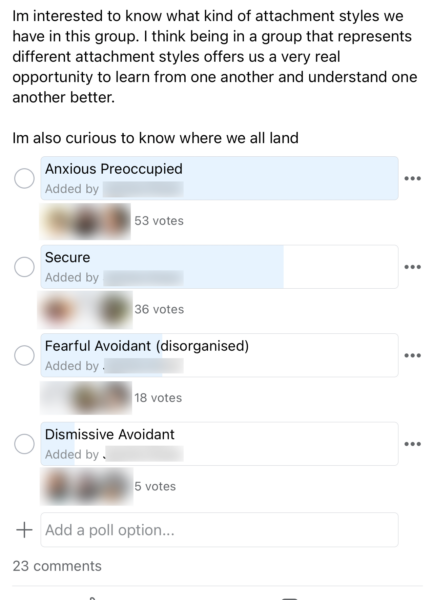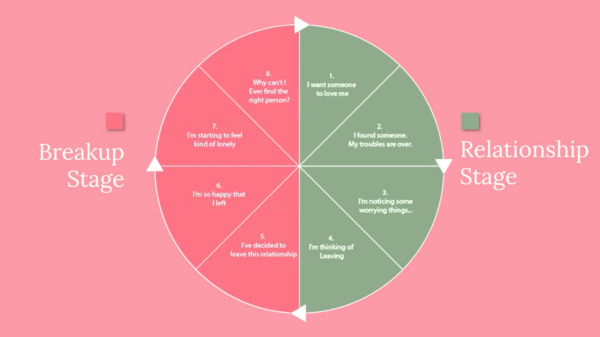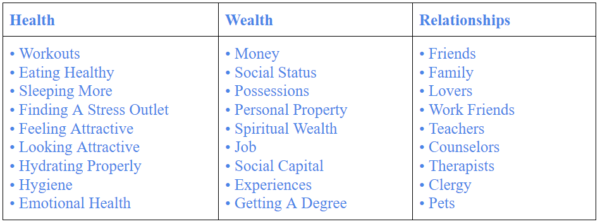Chuyển sang chế độ ngoại tuyến với ứng dụng Player FM !
Female Behavior After A Breakup
Manage episode 364115164 series 1314604
This is a complete list of the top female behaviors after a breakup.
And no, the items on this list weren’t randomly chosen just because we felt like it. Each and every one of them was either experienced firsthand by me or one of our coaches, or I actually found research to back it up.
Here are the common behaviors females are likely to exhibit after a breakup,
- More susceptible to anxious behaviors
- Are better at emotional expression
- End up recovering more fully after a breakup
- Won’t go on the rebound as often as men
- The glow down phase
- The glow up phase
- Getting stuck in the relapse stage
Let’s dive right in

What Are Your Chances of Getting Your Ex Boyfriend Back?
Take the quizBehavior #1: More Susceptible To Anxious Behaviors
So, the first thing I’ve noticed is that women tend to exhibit more anxious behaviors or engage in certain actions.
While researching for this article, I realized that I hadn’t answered a fundamental question about attachment styles. It has always been apparent that most of our clients have anxious attachment styles, while their exes tend to have avoidant attachment styles.
Anxious client,

Avoidant ex,

However, I wanted to explore the breakdown of these attachment styles based on gender roles.
Do women tend to have more anxious attachment styles compared to men? I delved into research and discovered that it argues,
Women indeed tend to have more anxious attachment styles than men.
This finding sheds light on the next aspect we’re going to discuss, which further supports this notion.
Women, especially after a breakup, tend to display more anxious behaviors.
If you aren’t familiar with what that looks like then allow me to give you a quick crash course,
- They’ll seek constant re-assurance
- Become overly clingy or dependent
- Constantly fear you’ll abandon them
- Get jealous
- Become possessive
- Overanalyze
- Be quick to emotional fluctuations
But by far the biggest thing I’ve witnessed women do after a breakup is exhibit what I refer to as “Gnatting” behaviors, which is an acronym I came up with for G.N.A.T. (Going Nuts at Texting).
G- Going
N- Nuts
A- At
T- Texting
But this leads me to my next question: Why? Why are women more susceptible to anxious behaviors?
Behavior #2: Women Are Better At Emotional Expression
Is it the concept of the core wound?
Well, ya that’s part of it. But I also believe another factor is the second significant behavior we’ve noticed women experience after a breakup. It’s the fact that they are generally better at emotional expression.
Women tend to openly express their feelings more compared to men. Consequently, after a breakup, they often discuss it with their friends or family members, which can aid in processing their emotions and facilitating a quicker healing process. On the other hand, men have been socially conditioned to suppress their emotions, which can prolong the healing journey.
Interestingly, a study conducted by Binghamton University in New York sheds light on this phenomenon.
The study revealed that women experience more pain during a breakup but eventually achieve more complete recovery. This finding, to me, highlights another significant behavior exhibited by women.
They may initially feel greater distress, but ultimately, they recover more fully.
Behavior #3: Women Recover More Fully After A Breakup
What’s fascinating about these first three behaviors in women is the synergy that exists among them.
Think of causality.
The cause and effect of the situation.
Females tend to be better at emotional expression. (which leads them to) Exhibit more anxious attachment behaviors (but because of that outward expression) They tend to get over breakup more fully.
Have you ever come across that meme depicting how men and women handle breakups?

It portrays men being initially ecstatic and women in tears, but then it reverses as time passes.
Surprisingly, there is often some truth to these memes.
The Binghamton study suggests that because men internalize their emotions and lack open communication and support systems, as dictated by societal norms, their healing process is prolonged.
In contrast, women feel the full spectrum of emotions, possess better emotional expression, and have support systems in place, leading to a more thorough recovery from breakups.
So, while they may feel worse initially, the positive aspect is that they tend to overcome it more completely.
Behavior #4: They Tend NOT To Go On The Rebound (Men Do)
The next significant behavior I’ve noticed among women after a breakup relates to their tendency not to engage in rebound relationships, whereas men often do.
I came across an intriguing divorce statistic that argued,
Men are more likely to seek rebound relationships following a divorce, while women generally do not.
This observation has been consistent in our coaching practice as well.
Although we don’t encounter many women or men attempting to recover relationships after marriage, it has occurred. However, when it comes to breakups, we have frequently seen female clients implementing the “being there” method.
The “being there” method is a strategy we developed for situations where one’s ex has moved on to someone else.
Interestingly, we have noticed a higher number of women utilizing the “being there” method compared to men.
I believe this relates back to the fact that women tend to refrain from entering rebound relationships as frequently as men. It’s not to say that women never engage in rebounds, but men appear to do so more often.
I attribute this pattern to the avoidant cycle, which I often discuss using my “avoidant death wheel” model consisting of eight stages.

As individuals progress through these stages, the avoidant (who we often find to be the exes of our clients) reaches a point where they start missing their former partner, and the grief from the breakup begins to surface.
At this juncture, they have a choice: either confront and process their emotions, something women tend to excel at, or distract themselves.
Rebounding is often a way of seeking distraction. We have observed that fearful avoidants are more susceptible to rebounding, although avoidants in general may also engage in this behavior.
Interestingly, according to the research, rebound relationships tend not to last very long.
They have a relatively low success rate, with only 19% of rebound relationships lasting beyond two years.
So, in the long run, a rebound relationship is unlikely to endure for an extended period. Nevertheless, men are more inclined to pursue rebounds as a means of temporarily forgetting or processing their grief.
Behavior #5: The “Glow Down” Phase
Now, the next two breakup behaviors exhibited by women are closely interconnected.
- The glow down phase
- The glow up phase
They care considered separate, but they can almost be combined into one simple behavior if that makes any sense.
To truly understand this, we need to explore a crossroads that individuals face during a breakup. At this crossroads, one can either experience a “glow down” or a “glow up.”
Let’s first discuss the glow down phase.
What is the glow down phase?
Essentially, it’s when someone reaches a crossroads and allows the grief and trauma of the breakup to negatively impact them. They may engage in unhealthy behaviors such as excessive drinking, smoking, or seeking validation through multiple casual encounters.
Ultimately, these behaviors serve as distractions.
Similar to men who may be inclined to pursue rebound relationships, women also resort to unhealthy coping mechanisms to deal with the pain and trauma they’re experiencing.
Unfortunately, they neglect what we refer to as the Holy Trinity, a concept we emphasize emphatically here at Ex Boyfriend Recovery.

Instead of actively working on improving different aspects of their lives, they engage in actions that may provide temporary relief but do not contribute to long-term growth.
For instance, Coach Amor (in the podcast attached to this article above) shared the story of her friend on our podcast, who thought drinking socially would help her relationships, but it ultimately influenced her social circle negatively and hindered progress in other areas of her life.
This phase, known as the glow down, worsens one’s situation as it involves engaging in behaviors that do not lead to genuine improvement.
Now, let’s turn to the other side of the coin, the glow up phase.
Behavior #6: The “Glow Up” Phase
Coach Amor made an insightful point during our discussion about this phase.
She mentioned that sometimes one has to go through a glow down before they can experience a glow up.
It’s about allowing yourself to be broken by the breakup, hitting rock bottom, and then beginning the journey of self-recovery.
This is where the glow up phase comes into play.
During this phase, individuals wholeheartedly embrace the Holy Trinity concept.

Amor herself generously shared her own breakup experience, describing how she initially went through a glow down phase, engaging in negative behaviors and neglecting the Trinity, despite being aware of its importance.
However, once she reached rock bottom, she shifted gears and decided to rebuild her life.
She focused on balancing different aspects of her Trinity, creating momentum that gradually gained strength.
Ultimately, her self-confidence grew.
This is the key we strive for when assisting our clients through breakups – helping them reach a point where they are not only okay with their ex, but also content with being single.
They become confident in the knowledge that a successful relationship awaits them in the future. This is the essence of the glow up phase.
By working on oneself internally, positive external changes begin to manifest.
Finally, let’s address the last significant behavior,
Behavior #7: Getting Stuck In The Relapse Stage
This is going to resonate with many of you.
Let’s start by discussing the stages of grief commonly associated with breakups.
While experts often talk about the five stages of grief, according to psychologist Susan Lachman, there are actually seven stages of grieving a breakup.
The seven stages are as follows:
- being desperate for answers
- denial
- bargaining
- relapse
- anger
- initial acceptance of the breakup
- redirected hope.
I’ve noticed that many people tend to get stuck in the relapse stage.
Let’s take Coach Amor as an example.
During the podcast episode for this article, she shared her own breakup story, describing how she went through the glow down phase and then repaired herself by going through the glow up phase.
However, she recently found herself in the relapse stage, where she constantly cycles through different stages of grief, desperate for answers, getting stuck in denial, or growing overly angry.
Her argument was that her momentum was negatively impacted, causing her to regress.
Instead of focusing on the negative aspects of her past relationship, she started reminiscing about the good times. This is an important concept that is often overlooked.
And that’s the thing, the stages of grief are not experienced in a linear fashion.
People often find themselves jumping from denial to anger to acceptance and then back to bargaining, constantly relapsing.
The relapse stage itself is characterized by this jumping around, tricking oneself into thinking they have fully accepted the breakup, only to realize that they haven’t truly done so.
It becomes a cycle that people can remain stuck in for a significant amount of time.
It’s crucial to recognize that this is a normal part of the grieving process that occurs during a breakup.
However, if you want to move past the relapse stage, there are three things you can do.
- Accept your circumstances
- Distract yourself
- Re-appraise your ex
Accept your circumstances
Acknowledge that the breakup has happened and that you need to adapt to this new reality.
Distract yourself
Take a page from Amors book and find healthy distractions, such as going to the gym. It’s important to note that if the distraction is removed, as in Amor’s case when she couldn’t go to the gym anymore, a relapse may occur.
This brings us to the third point.
Re-appraise your ex
Take a comprehensive look at your time together and acknowledge that while there may have been good moments, there were also significant challenges and negative experiences.
Focusing on the negative aspects will help you detach emotionally from your ex.
Strangely enough, even if you want your ex back, falling out of love with them is often an essential part of the process.
Consistently the most effective approach is to outgrow your ex and move forward.
The post Female Behavior After A Breakup first appeared on Ex Boyfriend Recovery.425 tập
Manage episode 364115164 series 1314604
This is a complete list of the top female behaviors after a breakup.
And no, the items on this list weren’t randomly chosen just because we felt like it. Each and every one of them was either experienced firsthand by me or one of our coaches, or I actually found research to back it up.
Here are the common behaviors females are likely to exhibit after a breakup,
- More susceptible to anxious behaviors
- Are better at emotional expression
- End up recovering more fully after a breakup
- Won’t go on the rebound as often as men
- The glow down phase
- The glow up phase
- Getting stuck in the relapse stage
Let’s dive right in

What Are Your Chances of Getting Your Ex Boyfriend Back?
Take the quizBehavior #1: More Susceptible To Anxious Behaviors
So, the first thing I’ve noticed is that women tend to exhibit more anxious behaviors or engage in certain actions.
While researching for this article, I realized that I hadn’t answered a fundamental question about attachment styles. It has always been apparent that most of our clients have anxious attachment styles, while their exes tend to have avoidant attachment styles.
Anxious client,

Avoidant ex,

However, I wanted to explore the breakdown of these attachment styles based on gender roles.
Do women tend to have more anxious attachment styles compared to men? I delved into research and discovered that it argues,
Women indeed tend to have more anxious attachment styles than men.
This finding sheds light on the next aspect we’re going to discuss, which further supports this notion.
Women, especially after a breakup, tend to display more anxious behaviors.
If you aren’t familiar with what that looks like then allow me to give you a quick crash course,
- They’ll seek constant re-assurance
- Become overly clingy or dependent
- Constantly fear you’ll abandon them
- Get jealous
- Become possessive
- Overanalyze
- Be quick to emotional fluctuations
But by far the biggest thing I’ve witnessed women do after a breakup is exhibit what I refer to as “Gnatting” behaviors, which is an acronym I came up with for G.N.A.T. (Going Nuts at Texting).
G- Going
N- Nuts
A- At
T- Texting
But this leads me to my next question: Why? Why are women more susceptible to anxious behaviors?
Behavior #2: Women Are Better At Emotional Expression
Is it the concept of the core wound?
Well, ya that’s part of it. But I also believe another factor is the second significant behavior we’ve noticed women experience after a breakup. It’s the fact that they are generally better at emotional expression.
Women tend to openly express their feelings more compared to men. Consequently, after a breakup, they often discuss it with their friends or family members, which can aid in processing their emotions and facilitating a quicker healing process. On the other hand, men have been socially conditioned to suppress their emotions, which can prolong the healing journey.
Interestingly, a study conducted by Binghamton University in New York sheds light on this phenomenon.
The study revealed that women experience more pain during a breakup but eventually achieve more complete recovery. This finding, to me, highlights another significant behavior exhibited by women.
They may initially feel greater distress, but ultimately, they recover more fully.
Behavior #3: Women Recover More Fully After A Breakup
What’s fascinating about these first three behaviors in women is the synergy that exists among them.
Think of causality.
The cause and effect of the situation.
Females tend to be better at emotional expression. (which leads them to) Exhibit more anxious attachment behaviors (but because of that outward expression) They tend to get over breakup more fully.
Have you ever come across that meme depicting how men and women handle breakups?

It portrays men being initially ecstatic and women in tears, but then it reverses as time passes.
Surprisingly, there is often some truth to these memes.
The Binghamton study suggests that because men internalize their emotions and lack open communication and support systems, as dictated by societal norms, their healing process is prolonged.
In contrast, women feel the full spectrum of emotions, possess better emotional expression, and have support systems in place, leading to a more thorough recovery from breakups.
So, while they may feel worse initially, the positive aspect is that they tend to overcome it more completely.
Behavior #4: They Tend NOT To Go On The Rebound (Men Do)
The next significant behavior I’ve noticed among women after a breakup relates to their tendency not to engage in rebound relationships, whereas men often do.
I came across an intriguing divorce statistic that argued,
Men are more likely to seek rebound relationships following a divorce, while women generally do not.
This observation has been consistent in our coaching practice as well.
Although we don’t encounter many women or men attempting to recover relationships after marriage, it has occurred. However, when it comes to breakups, we have frequently seen female clients implementing the “being there” method.
The “being there” method is a strategy we developed for situations where one’s ex has moved on to someone else.
Interestingly, we have noticed a higher number of women utilizing the “being there” method compared to men.
I believe this relates back to the fact that women tend to refrain from entering rebound relationships as frequently as men. It’s not to say that women never engage in rebounds, but men appear to do so more often.
I attribute this pattern to the avoidant cycle, which I often discuss using my “avoidant death wheel” model consisting of eight stages.

As individuals progress through these stages, the avoidant (who we often find to be the exes of our clients) reaches a point where they start missing their former partner, and the grief from the breakup begins to surface.
At this juncture, they have a choice: either confront and process their emotions, something women tend to excel at, or distract themselves.
Rebounding is often a way of seeking distraction. We have observed that fearful avoidants are more susceptible to rebounding, although avoidants in general may also engage in this behavior.
Interestingly, according to the research, rebound relationships tend not to last very long.
They have a relatively low success rate, with only 19% of rebound relationships lasting beyond two years.
So, in the long run, a rebound relationship is unlikely to endure for an extended period. Nevertheless, men are more inclined to pursue rebounds as a means of temporarily forgetting or processing their grief.
Behavior #5: The “Glow Down” Phase
Now, the next two breakup behaviors exhibited by women are closely interconnected.
- The glow down phase
- The glow up phase
They care considered separate, but they can almost be combined into one simple behavior if that makes any sense.
To truly understand this, we need to explore a crossroads that individuals face during a breakup. At this crossroads, one can either experience a “glow down” or a “glow up.”
Let’s first discuss the glow down phase.
What is the glow down phase?
Essentially, it’s when someone reaches a crossroads and allows the grief and trauma of the breakup to negatively impact them. They may engage in unhealthy behaviors such as excessive drinking, smoking, or seeking validation through multiple casual encounters.
Ultimately, these behaviors serve as distractions.
Similar to men who may be inclined to pursue rebound relationships, women also resort to unhealthy coping mechanisms to deal with the pain and trauma they’re experiencing.
Unfortunately, they neglect what we refer to as the Holy Trinity, a concept we emphasize emphatically here at Ex Boyfriend Recovery.

Instead of actively working on improving different aspects of their lives, they engage in actions that may provide temporary relief but do not contribute to long-term growth.
For instance, Coach Amor (in the podcast attached to this article above) shared the story of her friend on our podcast, who thought drinking socially would help her relationships, but it ultimately influenced her social circle negatively and hindered progress in other areas of her life.
This phase, known as the glow down, worsens one’s situation as it involves engaging in behaviors that do not lead to genuine improvement.
Now, let’s turn to the other side of the coin, the glow up phase.
Behavior #6: The “Glow Up” Phase
Coach Amor made an insightful point during our discussion about this phase.
She mentioned that sometimes one has to go through a glow down before they can experience a glow up.
It’s about allowing yourself to be broken by the breakup, hitting rock bottom, and then beginning the journey of self-recovery.
This is where the glow up phase comes into play.
During this phase, individuals wholeheartedly embrace the Holy Trinity concept.

Amor herself generously shared her own breakup experience, describing how she initially went through a glow down phase, engaging in negative behaviors and neglecting the Trinity, despite being aware of its importance.
However, once she reached rock bottom, she shifted gears and decided to rebuild her life.
She focused on balancing different aspects of her Trinity, creating momentum that gradually gained strength.
Ultimately, her self-confidence grew.
This is the key we strive for when assisting our clients through breakups – helping them reach a point where they are not only okay with their ex, but also content with being single.
They become confident in the knowledge that a successful relationship awaits them in the future. This is the essence of the glow up phase.
By working on oneself internally, positive external changes begin to manifest.
Finally, let’s address the last significant behavior,
Behavior #7: Getting Stuck In The Relapse Stage
This is going to resonate with many of you.
Let’s start by discussing the stages of grief commonly associated with breakups.
While experts often talk about the five stages of grief, according to psychologist Susan Lachman, there are actually seven stages of grieving a breakup.
The seven stages are as follows:
- being desperate for answers
- denial
- bargaining
- relapse
- anger
- initial acceptance of the breakup
- redirected hope.
I’ve noticed that many people tend to get stuck in the relapse stage.
Let’s take Coach Amor as an example.
During the podcast episode for this article, she shared her own breakup story, describing how she went through the glow down phase and then repaired herself by going through the glow up phase.
However, she recently found herself in the relapse stage, where she constantly cycles through different stages of grief, desperate for answers, getting stuck in denial, or growing overly angry.
Her argument was that her momentum was negatively impacted, causing her to regress.
Instead of focusing on the negative aspects of her past relationship, she started reminiscing about the good times. This is an important concept that is often overlooked.
And that’s the thing, the stages of grief are not experienced in a linear fashion.
People often find themselves jumping from denial to anger to acceptance and then back to bargaining, constantly relapsing.
The relapse stage itself is characterized by this jumping around, tricking oneself into thinking they have fully accepted the breakup, only to realize that they haven’t truly done so.
It becomes a cycle that people can remain stuck in for a significant amount of time.
It’s crucial to recognize that this is a normal part of the grieving process that occurs during a breakup.
However, if you want to move past the relapse stage, there are three things you can do.
- Accept your circumstances
- Distract yourself
- Re-appraise your ex
Accept your circumstances
Acknowledge that the breakup has happened and that you need to adapt to this new reality.
Distract yourself
Take a page from Amors book and find healthy distractions, such as going to the gym. It’s important to note that if the distraction is removed, as in Amor’s case when she couldn’t go to the gym anymore, a relapse may occur.
This brings us to the third point.
Re-appraise your ex
Take a comprehensive look at your time together and acknowledge that while there may have been good moments, there were also significant challenges and negative experiences.
Focusing on the negative aspects will help you detach emotionally from your ex.
Strangely enough, even if you want your ex back, falling out of love with them is often an essential part of the process.
Consistently the most effective approach is to outgrow your ex and move forward.
The post Female Behavior After A Breakup first appeared on Ex Boyfriend Recovery.425 tập
Tất cả các tập
×Chào mừng bạn đến với Player FM!
Player FM đang quét trang web để tìm các podcast chất lượng cao cho bạn thưởng thức ngay bây giờ. Đây là ứng dụng podcast tốt nhất và hoạt động trên Android, iPhone và web. Đăng ký để đồng bộ các theo dõi trên tất cả thiết bị.




